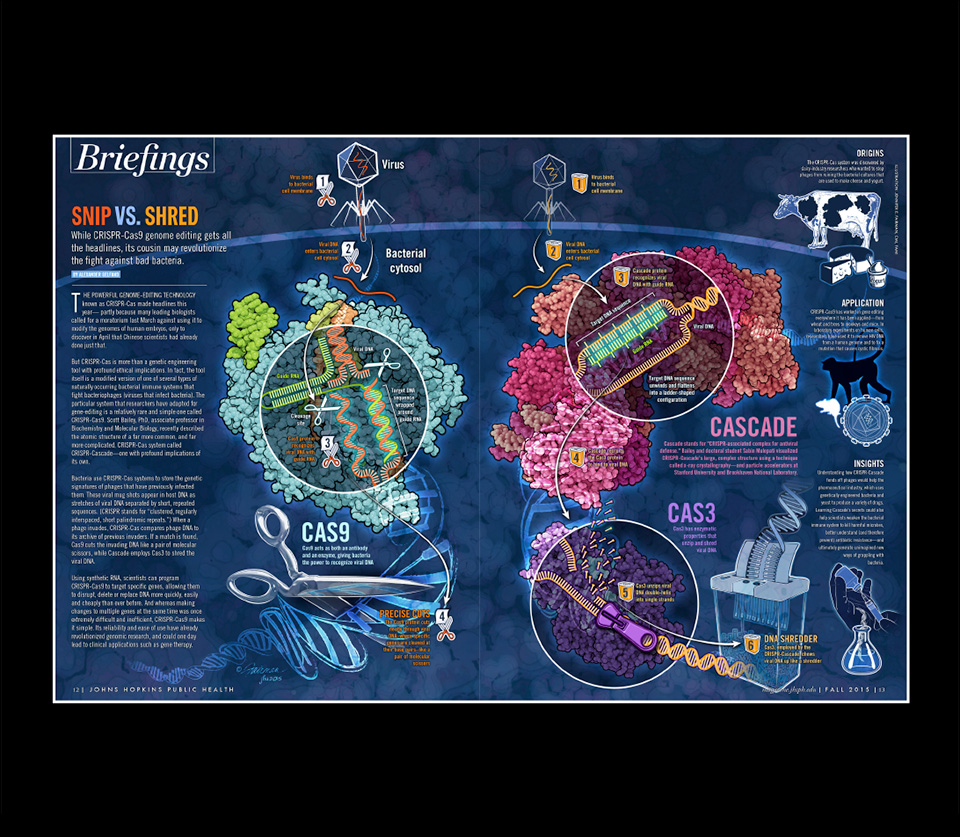
Jennifer E. Fairman
Snip vs. Shred—Understanding CRISPR-Cas Systems (Cas9 vs. Cascade/Cas3), 2015
Digital illustration
Protein Data Bank data; Adobe Illustrator and Adobe Photoshop
Johns Hopkins University School of Medicine
Baltimore, Maryland, United States
This illustration depicts two CRISPR-Cas systems, comparing a scissor-snipping Cas9 complex and a shredder-like Cascade/Cas3 complex. The illustration conceptually highlights the differences between their structures and functions. Both complexes are genetically engineered tools based on one of several naturally occurring bacterial immune systems that fight bacteriophages by targeting viral DNA sequences. Key differences are that the Cas9 is a single protein, while Cascade/Cas3 is a complex of multiple proteins. Cas9 acts as a dual antibody-enzyme, while Cascade/Cas3 acts sequentially as an antibody-enzyme. Cas9 targets viral DNA when it is still formed as a double helix with a hairpin of bacterial guide-RNA, while Cascade/Cas3 targets viral DNA as it unwinds and binds with bacterial guide-RNA in a flat, ladder-like configuration. Cas9 precisely snips viral DNA, like molecular scissors, cleaving individual base pairs, while Cas3 shreds large portions of viral DNA.
